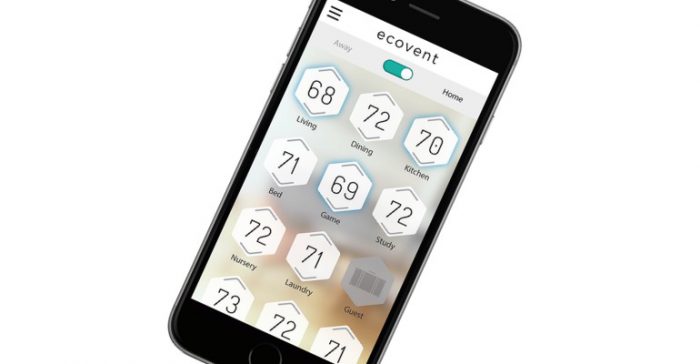CES 2016: Want Your Home to Tell You Where It Can Be More Energy Efficient?
PSFK, January 4, 2016. Image credit: Ecovent
In 2015, Ecovent won the CES Home Automation Product of Year for its intelligent home zoning system, giving homeowners room-by-room temperature control. This year, HVAC and Automation company will be providing an early look at the Home Health Report (HHR)—a new diagnostic feature that will provide homeowners with detailed reports on the health of their home. With it, first-time homeowners will have a complete understanding of the workings of their house. Using the data collected from the home, the HHR provides data and reports on the performance of a home, including:
- Calculations of how well rooms are insulated and how well rooms retain conditioned air
- Calculations of how much air filtration occurs and how effective the room is at keeping outside air out
- The risks in each room of mold growth
- Efficiency and effectiveness of the HVAC
- Increase and levels of static pressure and whether it’s time to change filters and much more
From the information they gather, consumers can decide if they need to replace windows, add insulation or figure out what can make their home more energy efficient.
Ecovent is one of the more elaborate home automation systems on the market, consisting of separate sensors and a hub that ties everything together. In order to tie the home together to use the HHR, users will have to replace their floor, wall, or ceiling vents to make it work. The sensors plug in over a power outlet (one per room) and monitor temperature, humidity, and air pressure—sending data to the hub, which directs the vents to adjust airflow. Ecovent recommends you replace every vent for proper operation and protection of your heating/cooling equipment in the entire home. Mind you, vents and sensors should cost about $100 each. The hub costs about $100 more. Vent sizes at least are limited to 4×10, 4×12, 6×10, and 6×12 inches. The company says you’ll never pay another penny, either for software updates or connectivity, after your initial purchase. The hub has both Wi-Fi and ZigBee capability, but communication among the components is over a proprietary protocol. PSFK spoke with CEO Dip Patel on their latest advances.
